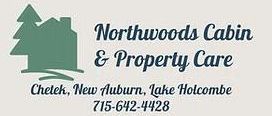Frequently Asked Questions
Lawn Care & Fertilizing
What height should grass be mowed at?
For a healthy lawn, we recommend mowing at 3 to 4 inches. Taller grass promotes deeper roots, better drought resistance, and helps prevent weeds like crabgrass. When we mow for you, our commercial mowers are set to 4”. For the last mowing of the year, we mow at 2.5”.
Why should I fertilize my lawn?
Fertilizing your lawn provides essential nutrients, promoting healthy, lush growth, thicker grass, and stronger roots, making it more resilient to pests, diseases, and environmental stressors like heat and foot traffic. We now provide a 1 step and 2 step application method to provide nutrients to your lawn all season.
How do I get rid of crabgrass
Prevention is the best way to control crabgrass and is done by maintaining a healthy, thick lawn. The best way to prevent crabgrass is with a pre-emergent herbicide applied in early spring before soil temperatures reach 55°F. If crabgrass has already appeared, post-emergent treatments and proper mowing practices can help control it.
How long does it take for weeds to die after applying weed control?
Most weed control products start working within a few hours to a few days, but complete results may take 7–14 days, depending on the weed type and weather conditions.
How long should I wait before mowing after weed control has been applied?
We recommend waiting 24–48 hours after applying weed control to allow the product to absorb properly into the weeds.
Should lawn clippings be bagged or left on the lawn?
In most cases, leaving clippings on the lawn (mulching) is beneficial as they decompose and return nutrients to the soil. However, if the grass is overgrown or wet, bagging may be necessary to prevent clumps. Removing lawn clippings and leaves in the fall is crucial for a healthy lawn because they can smother the grass, block sunlight and air circulation, and potentially lead to diseases and thatch buildup over winter.
What is core aeration, and why is it important?
Core aeration is the process of removing small plugs of soil to reduce compaction, improve air circulation, and enhance water and nutrient absorption. It’s essential for maintaining a healthy lawn, especially in compacted or high-traffic areas. For cool-season grasses, aeration is beneficial in both spring and fall.
What time of year is best for seeding and overseeding?
The best time for seeding and overseeding in Wisconsin is early fall (late August to mid-September) when soil temperatures are warm, and moisture levels are higher. Spring is also an option but requires more watering and weed control.
When is the best time to water my lawn?
Water your lawn early in the morning (between 4 AM and 10 AM) to reduce evaporation and allow grass to dry before nightfall, which helps prevent disease. Watering lawns at night promotes disease growth because prolonged moisture on grass blades creates an ideal environment for fungal and bacterial diseases to thrive, especially when combined with the lack of sunlight for drying.
How do I control dandelions?
Dandelions are best controlled with a broadleaf herbicide in early summer and early fall. Fall is particularly good for preventing dandelions the following spring. However, you can also target dandelions anytime they are actively growing.
Handyman & General Maintenance
What types of handyman services do you offer?
We provide a wide range of comprehensive services to maintain, repair, and add to your property. We do 90% of all work in house for our clients. If you have something outside our scope, we have verified and reliable contractors that work with us.
How do I know if my deck needs repair or replacement?
Signs of needed deck repair include loose or rotting boards, wobbly railings, and visible cracks or splinters. If multiple areas are compromised, a full replacement may be more cost-effective.
Do you handle small repairs, or only large projects?
We take on projects of all sizes, from minor fixes to full renovations. No job is too small!
Snow & Ice Management
When should I sign up for snow removal services?
We recommend signing up for snow removal before the first snowfall to ensure you’re on our route and receive priority service. Optimal time to sign up with us is October.
How do you control ice?
We offer both non-chloride and sand options, depending on your property’s needs. Our non-chloride option is an environmentally liquid that is effective for melting ice, while sand provides traction on slippery surfaces. Please contact us to learn why our non-chloride(salt) liquid ice control option is right for you.
Can you clear sidewalks and walkways in addition to driveways?
Yes! Our snow removal services include driveways, sidewalks, walkways, and entryways to ensure safe access to your home or business.
Property Security & Short-Term Rental Management
Do you provide property security checks?
Yes! We offer vacation home checks, rental property inspections, and general security monitoring to ensure your property stays safe while you're away.
What does your short-term rental management service include?
We provide cleaning, maintenance, and emergency repairs to keep your rental property in top condition and ensure positive guest experiences.
How often should I have my rental property inspected?
We recommend regular inspections between guest stays to catch small issues before they become big problems.


